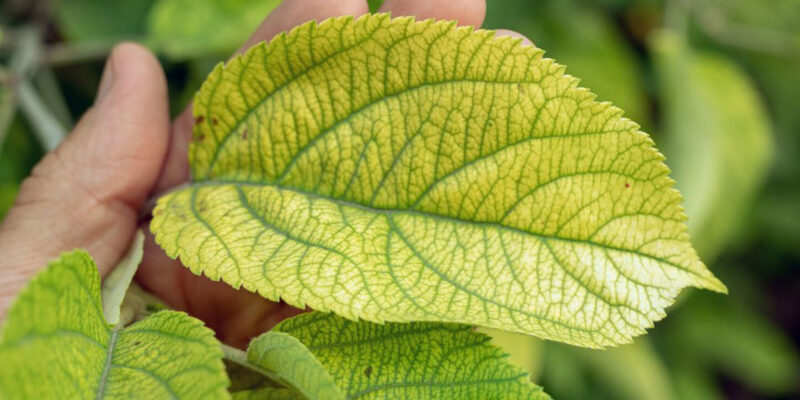Iron Chlorosis Is A Nutrient Deficiency
 Chlorosis is a yellowing or light green color in foliage that indicates a nutrient deficiency typically caused by the lack of iron absorbed by plants. Weather conditions, changes in the soil, and other changes in the environment and health of the tree can bring about this deficiency.
Chlorosis is a yellowing or light green color in foliage that indicates a nutrient deficiency typically caused by the lack of iron absorbed by plants. Weather conditions, changes in the soil, and other changes in the environment and health of the tree can bring about this deficiency.
Since iron chlorosis is a nutrient deficiency, it is sometimes difficult to determine the cause. Most often, chlorosis is caused by a low-acid soil. Soils that are acidic will freely exchange iron between the soil and tree roots. Soils that are less acidic (known as alkaline) will bind up any iron that may be in the soil and it becomes locked to soil particles and unavailable to the tree roots. Even trees growing in red clay soils can exhibit symptoms of chlorosis. The soil may be rich in iron, but the iron is locked up and unavailable.
What Trees & Shrubs Are Affected By Iron Chlorosis?
All trees and shrubs can be affected by iron chlorosis, especially those that prefer soils that are slightly acidic. Acid soils are better able to release iron and make it more available to plants. Iron chlorosis is known to be a problem in species such as:
- Oaks (especially pin oak)
- Sweet gums
- River birches
- Red maple
- Bladcypress
- Azaleas and rhododendron
What Are The Symptoms Of Iron Chlorosis?
Symptoms of iron chlorosis includes yellowed or light green leaves with dark green veins, scorching in severe cases, and a lack of growth. The discolored leaves do not manufacture sugar (energy for the tree) efficiently and may become weak over time which opens the door for a number of other stress related declines.
What Are The Treatments For Iron Chlorosis?
Treatments for chlorosis often include treating the soil to increase acidity. Acidic soils will release iron more freely and increase the uptake of iron and other nutrients in tree roots. Soil treatments include a simple application of soil sulfur, a yellow powder that can be very pungent. Rain will soak the sulfur in to the ground and may help to increase soil acidity. For more stubborn cases of chlorosis, a soil injected liquid application of nutrition with added sulfur will often be the treatment that provides lasting impact. And for the most stubborn cases, arborists will inject iron and other micronutrients directly in to the tree’s trunk, much like getting a shot at the doctor. While the impact is relatively fast, it typically only lasts about one season.
To combat and prevent iron chlorosis, give your tree good growing conditions from the moment it is planted. For older, established trees, call your local ISA-certified arborist. They will come to your home to perform an inspection and recommend treatments from soil amendments to injections.
